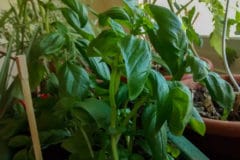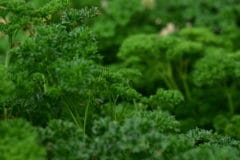herbs in the kitchen garden
Whether as a spice, medicinal or aromatic plant, herbs are brought into every household. It is therefore difficult to do without a kitchen herb garden, although you do not necessarily have to own a garden. Instead, most herbs can also be cultivated on the balcony, the windowsill or even in the kitchen. But here are a few tips for the kitchen garden in front of your house:
- The herb bed should be at least 10 square meters in size.
- Surround it with herb hedges of sage, thyme, hyssop or lavender.
- Divide the bed area according to the use of the individual herbs.
- Classic kitchen herbs (chives, parsley, dill, marjoram), Mediterranean spice plants (basil, oregano, rosemary, thyme), tea herbs (fennel, mint, camomile, anisysop) and herbs with edible flowers (borage, mallow, nasturtium, marigold) are planted here in matching groups.
- Divide the individual areas by small paths and stepping stones.
- These also ensure that all herbs are easily accessible.
Colourful variety – Herbs and flowers
Among the medicinal and aromatic herbs there are a multitude of varieties with interesting shapes and colours. Colourful foliage herbs and herbs with eye-catching flowers enrich borders or the natural garden and can be wonderfully combined with ornamental plants. They can be combined very well with various magnificent shrubs as well as roses – the duo roses and lavender, for example, is often put together, even if it is somewhat problematic from the point of view of the different needs of the two plant groups. Herbs such as alant, fennel, lovage, milk thistle or angelica are very suitable as solitary plants. They provide an eye-catching change in the flower bed.
Suitable bed borders for the herb garden
Many herbs are very vigorous and tend to break out of their beds. If the shape of the bed is to be maintained in the long term, bed surrounds can help. Suitable for this are:
- Semi-shrubs such as lavender, sage, curry, thyme, etc.
- Boxes and other low hedges
- stone edgings (bricks, natural stones, concrete)
- Wooden planks (especially durable woods such as larch, robinia, oak)
- wattle fences
Remember that hedges need to be pruned regularly to keep them attractive – and not to rob the light from the herbs growing in the bed.
Hint
Annual and perennial herbs grow together in a bed. It is important that the one-year-olds change location every year and have sufficient space for several years.












